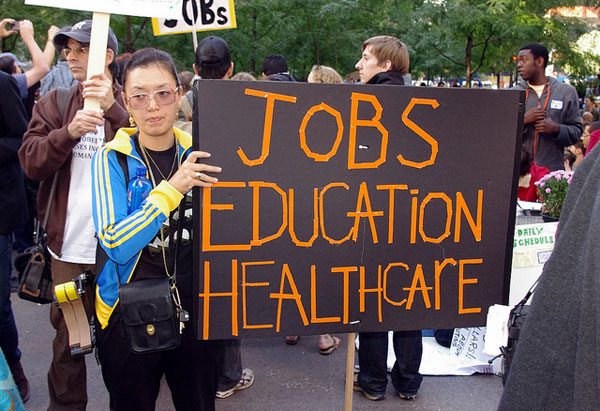
August 17, 2017; Brookings Institution
We now have a better idea about why the economic recovery just doesn’t feel right. Two recently released reports from the Brookings Institution’s Hamilton Project shed more light on employment in the United States and the challenges we still face from a struggling economy. The good news is that the overall job market has now fully recovered from the huge loss of jobs experienced during the 2007-2008 Great Recession. But while the statistic recovery is now complete, the human impact is not; there are significant lingering challenges being faced by those left on the outside looking in.
From an overall national perspective, the employment picture is back to what it was pre-Recession. Adjusting for the overall growth of the population and the aging baby boom generation, “nearly a full decade after the start of the recession, employment has returned to its demographically adjusted pre-recession level. This does not mean that all harm to the labor market resulting from the Great Recession has dissipated, nor that the economy is at full employment. It does mean, though, that the economy has added enough jobs to make up for the losses during the Great Recession.”

Reaching the yard marker of 2007-2008 is an important milestone. But compared to the three recessions that preceded the Great Recession (1981, 1990, and 2001), the hole left was much deeper and it took much longer to recover. While the nation as a whole is now back to normal, regionally there are significant differences.
Sign up for our free newsletters
Subscribe to NPQ's newsletters to have our top stories delivered directly to your inbox.
By signing up, you agree to our privacy policy and terms of use, and to receive messages from NPQ and our partners.
States in the Northeast and Midwest have seen particularly strong job growth, adjusting for demographic change; for example, Massachusetts has closed its gap and added 1.1 percentage points. Some of the largest remaining gaps are observed in Western states, where Wyoming has the largest employment rate gap of -4.3 percentage points. Importantly, these differences may reflect differences in population growth and migration across the states.
For regions on the downside of the recovery curve, the challenges remain difficult. Across the country, there is an oft-unseen population for whom the recovery has not happened at all. They are not working, and so do not have the income from a steady job to provide a stable economic platform. For governments at all levels, nonprofit organizations, and philanthropists who see “safety net” supports as within their mission, understanding this segment of our population is critical. According to Brookings, “of the nearly 38 million men and 56 million women who are not in the labor force, 57 percent of men and 55 percent of women are at least 55 years old. At the other end of the spectrum, about 23 percent of men and 16 percent of women who are not in the labor force are ages 16 to 24, 81 percent of whom reported being in school.”
Two current major political battlefields, education and health care, become even more important in light of what the Brookings studies found. Education does matter; “the less educated an adult is the more likely it is that they will not be in the work forces.” And good health (and healthcare) matters, too. Brookings found that “almost 30 percent of prime-age nonparticipants—roughly equally split between men and women—report being ill or disabled. With roughly 45 percent of prime-age male nonparticipants classified as disabled, health related barriers to being in the labor force may represent a significant challenge…and pain medication may prevent a significant number of men from working.”
Being without a job and having no family to lean on for support is a prescription for poverty. “Among nonparticipants living alone, the overwhelming majority are in the bottom quintile of the income distribution: 89 percent of males and 94 percent of females fall into this income range.” Having a partner to live with improves your chances, especially if you are a nonworking woman. “Almost 40 percent of partner-only households in which there is a male nonparticipant are in the bottom quintile of income, compared with only 15 percent of partner-only households in which there is a female nonparticipant.” At the very bottom of the economic ladder of working age adults are the “11 percent [who] report income from the safety net while receiving no earnings and the more than 1.3 million Americans out of the labor force [who] report having no income at all.”
Clearly, the work of economic repair has not been completed. For organizations, public and private, whose work it is to support those who cannot make it on their own, this picture of a recovery still in progress can help shape their agenda for the coming months and years. A better understanding of the barriers keeping people out of gainful employment can help tailor programs and policies to be more effective. Recognizing that education, health, and other societal issues outside the workplace are significant can help build support for strengthening these social systems. Seeing the regional and demographic obstacles can lead to a more focused look at how best to overcome the hurdles. Ignoring these clues will lead to more societal turmoil and dysfunction.—Martin Levine













